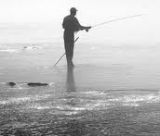- Forum
- General Discussion | Introductions | Off Topic Forum
- Photography General Discussion
- How would you charge for this job?
How would you charge for this job?
-
 Topic Author
Topic Author
- Gump
- Snapobsessed
-
- Nikon D300
- Followers: 67
- Posts: 405
-
Points:
1610
Post #219007
I haven't quoted them anything and still on the fence whether to charge them by the hour or flat rate. If flat rate, what would you charge for doing this?
Oh and they want the RAW files. Which I'm OK with.
-

- Darrell
- Apprentice
-
- Nikon D7000 & D70
- Followers: 27
- Posts: 2059
-
Points:
0
-

- I shoot RAW
- Snapobsessed
-
- D700 and D7000
- Followers: 78
- Posts: 425
-
Points:
2918
Post #219095
Wasn't me
-

- Henry Peach
- Apprentice
-
- I currently use a 5DII or Sony Nex-3 most of the time.
- Followers: 50
- Posts: 2925
-
Points:
16
Post #219128
Before releasing the raw files I would make sure their reasoning for requiring raw files was sound. I find that many people have just heard that "raw is better", and they don't really understand processing. Also that there will be an additional charge that was not considered in the original estimate if they require me to process the files at a later date. Usually, even if they say they just want the raw files (which I only offer for some sorts of jobs), I include processing in the estimate, and just deliver a set of processed jpegs too. 9 times out of 10 they just end up using the jpegs.
-

- Foxy Girl
- Photography Hooked
-
- Nikon D810 and Nikon D80
- Followers: 184
- Posts: 818
-
Points:
2789
-

- Raymond II
- Lone Wolf
- Nikon D80
- Followers: 31
- Posts: 180
-
Points:
443
Post #219411
-

- Stealthy Ninja
- Moderator
-
- Fuji X stuff and a 1DsIII for some reason
- Followers: 982
- Posts: 16300
-
Points:
6837
Post #219433
Henry Peach wrote: I calculate my pricing on how much time and effort a job is going to take, so usually some sort of hourly rate. The client is going to want to know a single price for the entire job though. I tell them a price based on how long I think it should take, and explain to them that the price covers up to a certain amount of time. After that an additional hourly charge kicks in. This encourages everyone to get organized and work to make sure the job gets done quickly and smoothly.
Before releasing the raw files I would make sure their reasoning for requiring raw files was sound. I find that many people have just heard that "raw is better", and they don't really understand processing. Also that there will be an additional charge that was not considered in the original estimate if they require me to process the files at a later date. Usually, even if they say they just want the raw files (which I only offer for some sorts of jobs), I include processing in the estimate, and just deliver a set of processed jpegs too. 9 times out of 10 they just end up using the jpegs.
I totally agree.
Personally I will never give away my raw files. The exception is when I shoot with my business partner and he wants to do the processing. I trust him to do an excellent job. Even then it's a rare occasion.
To me raw processing is as much a part of my work as taking the photos themselves.
-

- Jim Photo
- The Lounger
- Nikon D700
- Followers: 155
- Posts: 1430
-
Points:
3595
-

- James L
- Snapobsessed
-
- D90 and D700 (Nikon of course!)
- Followers: 95
- Posts: 380
-
Points:
1979
-

- mj~shutterbugg
- The Lounger
-
- Canon 5d Mark iii; Canon 5D Mark ii; Canon 10D IR converted
- Followers: 46
- Posts: 1390
-
Points:
10
Post #219687
Stealthy Ninja wrote:
Henry Peach wrote: I calculate my pricing on how much time and effort a job is going to take, so usually some sort of hourly rate. The client is going to want to know a single price for the entire job though. I tell them a price based on how long I think it should take, and explain to them that the price covers up to a certain amount of time. After that an additional hourly charge kicks in. This encourages everyone to get organized and work to make sure the job gets done quickly and smoothly.
Before releasing the raw files I would make sure their reasoning for requiring raw files was sound. I find that many people have just heard that "raw is better", and they don't really understand processing. Also that there will be an additional charge that was not considered in the original estimate if they require me to process the files at a later date. Usually, even if they say they just want the raw files (which I only offer for some sorts of jobs), I include processing in the estimate, and just deliver a set of processed jpegs too. 9 times out of 10 they just end up using the jpegs.
I totally agree.
Personally I will never give away my raw files. The exception is when I shoot with my business partner and he wants to do the processing. I trust him to do an excellent job. Even then it's a rare occasion.
To me raw processing is as much a part of my work as taking the photos themselves.
100%
- Forum
- General Discussion | Introductions | Off Topic Forum
- Photography General Discussion
- How would you charge for this job?
Latest Reviews
The Olympus Pen E-P7 is an affordable micro four thirds mirrorless camera with 4K video capabilities, a 20.3MP sensor, and 121 focus points, making it a solid entry-level camera for beginners.
The Panasonic G9 II is a 25.2-megapixel micro four thirds camera with numerous features that make it punch out of its weight class, like 779 AF points, 5.8K video, and weather sealing.
The Fujifilm XT5 is a 40MP mirrorless camera capable of 6.2K video at 30p. With those specs, it’s an ideal choice for photographers needing a camera to pull double duty for imaging and video.
The Canon EOS R100 is an entry-level mirrorless camera introduced in 2023. But just because it’s an entry-level camera doesn’t mean it’s a bare-bones camera. Find out why in this review!
Forum Top Posters
-
1Scotty 9 posts
-
2Roman Omell 4 posts
-
3Razky 4 posts
-
4Pat White 3 posts
-
5CharleyL 3 posts
-
6ShutterPal 3 posts
-
7Ruby Grace 3 posts
-
8Roger Lang 3 posts
-
9Nefarious 3 posts
-
10Jim Photo 3 posts
Latest Articles
Upgrade your kit in 2024 with the best intermediate camera on the market! The question is, what camera fits the bill? We’ve got three top options for you to choose from in this buyer’s guide.
The best photography jobs right now are a mix of tried-and-true gigs like wedding photography and new jobs highlighting AI’s capabilities, travel, and videography.
The Olympus Pen E-P7 is an affordable micro four thirds mirrorless camera with 4K video capabilities, a 20.3MP sensor, and 121 focus points, making it a solid entry-level camera for beginners.
Starting a photography business is one thing; sustaining your business over a long period of time is another. Use the tips in this professional photography guide to build something with longevity!
The Panasonic G9 II is a 25.2-megapixel micro four thirds camera with numerous features that make it punch out of its weight class, like 779 AF points, 5.8K video, and weather sealing.
Cinematic photography is an interesting genre that combines photographic and videographic skills along with effective storytelling techniques. The result? Highly impactful images!
Newborn photography requires skill, the right gear, and a lot of patience. This beginner’s guide discusses critical topics that will help you be more prepared for before, during, and after the shoot.
To fill the frame means to expand the footprint of the subject in your shot. Get in close, zoom in, crop the image, or use other techniques to bring the subject to the forefront.


















